The Evolution of Marketing
Marketing has undergone a remarkable transformation, moving from traditional methods to the vibrant world of digital marketing. Traditional marketing techniques, such as direct mail, print advertisements, and radio advertising, have long been effective in shaping brand identity and reaching diverse audiences. Even today, they account for 54% of all advertising revenue, highlighting their ongoing significance.
However, the advent of the internet and digital platforms has heralded a new era in marketing. This shift is powered by technological advances, changing consumer behavior, and the rise of e-commerce. More than 170 million people are now engaging with brands online, prompting businesses to pivot their strategies to digital channels.
“The ability to target specific audiences and measure results has made digital marketing an indispensable tool for businesses.”
While specific current statistics could not be retrieved, the growth trajectory of digital marketing is undeniable. The synergy of traditional and digital marketing strategies offers businesses an unparalleled opportunity to reach and engage consumers in today’s dynamic landscape.
Benefits of Digital Marketing
In today’s business landscape, digital marketing offers numerous advantages that drive success. One of the key benefits is its ability to target specific audiences. By leveraging advanced targeting methods, businesses can reach consumers based on interests and behaviors, enhancing engagement and conversion rates.
Another significant advantage is cost-effectiveness. Compared to traditional marketing methods, digital marketing is more affordable, allowing businesses of all sizes to scale their efforts efficiently. For instance, digital advertising rates range from $250 to $20,000 monthly, much lower than the costs associated with prime time TV ads or print media.
Additionally, digital marketing thrives on data-driven strategies. By collecting and analyzing data, businesses can personalize marketing messages and optimize campaigns. This approach not only improves customer relationships but also increases sales by tailoring strategies to specific consumer segments. Tools like PPC management can further enhance these efforts.
| Marketing Method | Cost |
|---|---|
| Traditional Advertising | Higher costs, variable based on medium |
| Digital Advertising | Lower costs, scalable and measurable |
As businesses continue to navigate the digital age, embracing these benefits is crucial for maintaining a competitive edge and achieving marketing goals.
E-Commerce Growth Amid Digital Marketing
In the bustling marketplace of today’s digital age, e-commerce has emerged as a formidable force, transforming how consumers shop and businesses sell. In 2023, U.S. e-commerce sales soared to approximately $1.119 trillion, accounting for 22.0% of total retail sales. This growth signifies a substantial rise from the previous year, showcasing e-commerce’s resilience and adaptability.
Digital marketing has been pivotal in this transformation, enabling businesses to reach wider audiences with precision. By utilizing targeted ads and personalized campaigns, companies can engage consumers more effectively, leading to increased sales and brand loyalty. “The power of digital marketing lies in its ability to not just reach, but to resonate with the right audience,” notes a market expert.
Consumer behavior is also evolving, influenced heavily by technological advancements. According to the Consumer Trends Report, 32% of Generation Z shops online daily, a stark contrast to the 7% of Baby Boomers. Platforms like TikTok are becoming new frontiers for product searches, particularly among younger shoppers, underscoring the need for businesses to adapt their strategies to meet these changing preferences.
Driving Traffic to E-Commerce Sites
SEO Strategies
Effective SEO strategies are crucial for increasing visibility and attracting more visitors to e-commerce sites. By conducting thorough keyword research using tools like Google Keyword Planner, businesses can uncover high-volume, low-competition keywords that align with their products. Additionally, crafting optimized product descriptions and ensuring mobile optimization can significantly enhance search engine rankings.
Social Media Marketing
Leveraging social media marketing is a powerful way to drive traffic. Engaging content creation and influencer partnerships allow brands to reach broader audiences. For instance, using Instagram Stories to showcase products not only creates urgency but also encourages users to visit the site. In addition, targeted advertising features on platforms like Facebook can direct specific demographics to your store.
Email Campaigns
Email marketing remains a robust channel for traffic generation. Welcome emails and abandoned cart emails are effective in nurturing customer relationships and increasing conversions. Brands like FREYRS Eyewear use clear CTAs in their emails to prompt easy checkouts, demonstrating how well-crafted emails can lead to higher engagement and sales.
Measuring Success in Digital Marketing
In today’s digital landscape, effectively measuring digital marketing success hinges on tracking the right Key Performance Indicators (KPIs). Each KPI offers valuable insights into different aspects of the marketing strategy, guiding businesses toward achieving their goals.
| KPI | Meaning |
|---|---|
| Customer Lifetime Value (CLV) | Measures total revenue generated by a customer over time |
| Conversion Rate | Percentage of visitors who convert into leads or customers |
| Search Traffic | Tracks total visits and organic traffic |
| Click-Through Rate (CTR) | Ratio of clicks to views on ads or emails |
To effectively analyze these KPIs, businesses rely on analytics tools. Tools like Improvado and Adobe Analytics streamline data collection and visualization, enabling data-driven decisions. As one expert notes, “Data should be the foundation of all decision-making processes in digital marketing.”
Adapting strategies based on data insights is crucial. Through continuous optimization and real-time adjustments, businesses can refine their approaches to boost Return on Investment (ROI). Techniques like A/B testing help evaluate which strategies resonate best with the target audience, ensuring ongoing improvements.
By leveraging KPIs and analytics, businesses can navigate the dynamic digital marketing landscape, driving growth and success.
Frequently Asked Questions
What is digital marketing? Digital marketing involves using online platforms like social media, search engines, and email to promote products or services. It leverages technology to connect businesses with their audience, making it crucial in today’s digital age.
How does it benefit small businesses? Digital marketing is especially beneficial for small businesses as it provides a cost-effective way to reach a broad audience. By utilizing tools and strategies like targeted advertising and data-driven insights, small businesses can optimize their marketing efforts, enhance customer engagement, and ultimately boost sales without the hefty budget demands of traditional marketing.
What are the latest trends in e-commerce? E-commerce is continuously evolving, with trends such as mobile shopping, personalization, and AI-driven customer experiences taking center stage. Consumers increasingly expect seamless, tailored shopping experiences, prompting businesses to integrate advanced technologies to meet these demands and stay competitive.
Conclusion and Future Outlook
As we’ve explored, the synergy between digital marketing and e-commerce is reshaping today’s business landscape. Digital marketing offers targeted reach, cost-effectiveness, and data-driven strategies, which are crucial for e-commerce success. The ability to track Key Performance Indicators (KPIs) ensures businesses can measure and optimize their efforts effectively.
Adaptability is key in navigating the ever-evolving digital realm. Embracing data insights allows businesses to fine-tune strategies, ensuring they remain competitive and relevant. The importance of real-time adjustments and A/B testing cannot be overstated, as they drive better ROI and customer engagement.
Looking ahead, trends like AI-driven personalization, mobile commerce, and enhanced customer experiences will dominate. Businesses need to stay ahead by integrating advanced technologies and continuously refining their strategies. By doing so, they can unlock new opportunities and thrive in the digital economy.
Ultimately, success in this landscape hinges on the ability to adapt and innovate. Those who harness the power of digital marketing and e-commerce will not only meet current demands but also set the stage for future growth and prosperity.



